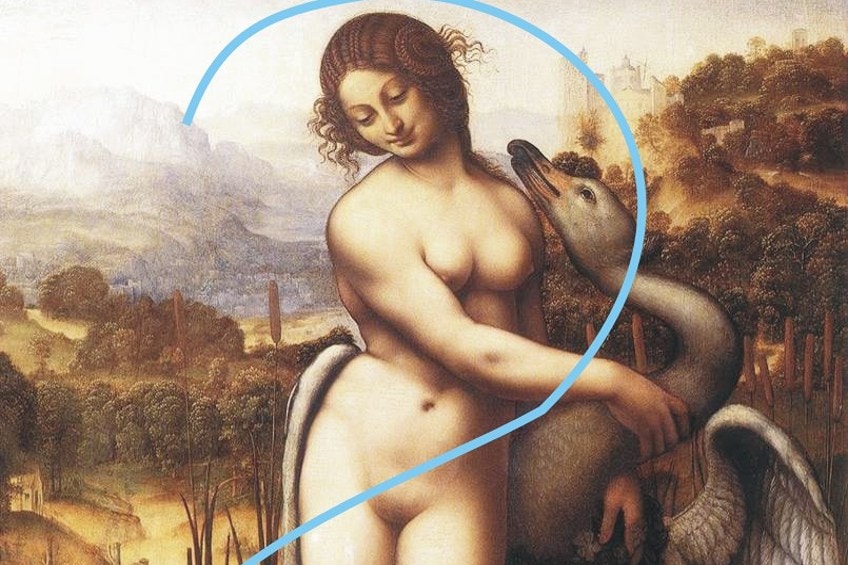Contrapposto – One of the Most Famous Renaissance Poses
What is contrapposto and what is the contrapposto definition? The contrapposto pose was often applied in the classical posing of sculptures. In classical and Renaissance poses, the contrapposto pose refers to a person standing with the majority of their weight balanced on one foot, resulting in the arms and shoulders twisting off-axis from the legs and hips.
What Is the Contrapposto Pose?
Contrapposto, which first appeared in Ancient Greece, is regarded as a significant milestone in the history of both Ancient Greek and Western art, as it represents the very first time that the human figure is utilized to portray an underlying psychological attitude. This provides the form with a more fluid, or loose, appearance.
Sculptors further refined and established the form during the Imperial Roman and Hellenistic periods, until it went out of favor during the Medieval Era and was rediscovered in the Renaissance period.
Contrapposto Definition
The contrapposto pose can be defined as a dynamic classical posing stance in which certain parts of the body twist against others. It is strongly comparable with realism in art since it replicates a highly natural stance found in everyday life.
Contrapposto, which provides the sense of movement, is less accentuated than the highly serpentine S-curve.
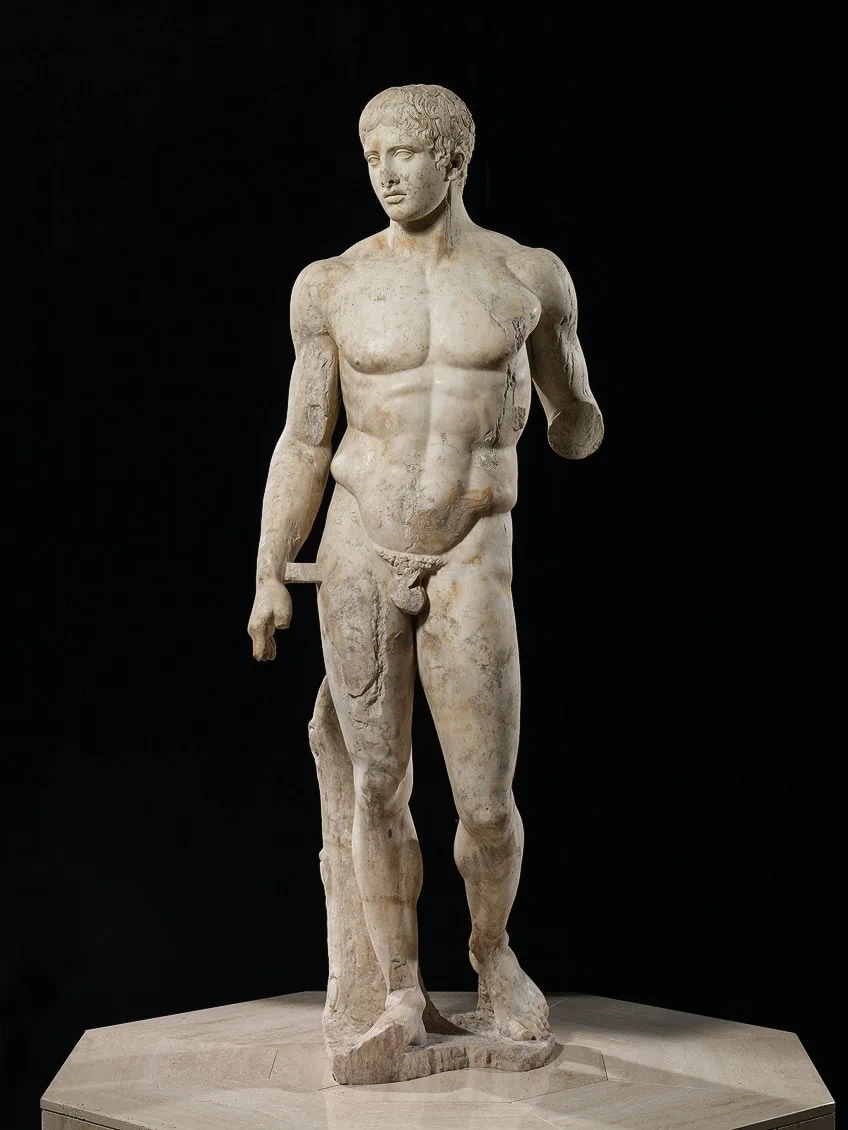
We do not usually stand completely straight as humans. We do not distribute our weight equally on both feet and we most likely switch to one foot instead. The second thing that happens is that the hip on which we are bearing weight shifts to the side. As a result, the opposing hip has likewise moved inward somewhat. The more we shift our weight, the more our hips will move. There is also a small tilt to the leg line. Our weight-bearing leg will most probably remain straight – it’s really difficult to bend it in this posture – while our loose leg most likely bends a bit.
Our shoulders remain fairly similarly spaced between our feet, resulting in a slightly inclined torso with one shoulder somewhat higher than the other.
History of Classical Posing
Kritios Boy c. (480 BC), is the very first documented figure to utilize contrapposto, so named because it was formerly credited to the sculptor Kritios. It is conceivable, perhaps probable, that previous bronze sculptures employed the method, but most likely have long since disappeared. The figure is an original Greek statue and not a Roman reproduction.
Contrapposto Greek Classical Posing
Before the advent of contrapposto, the archaic kouros and kore statues were abundant in ancient Greece. Contrapposto has regularly been employed in western sculpture from its inception. According to Polykleitos, it is one of the most prominent qualities of his realistic pieces and those of his predecessors, Skopas, Lysippos, and others.
Polykletian sculptures, such as the discus-bearer, depict glorified athletic youths with almost supernatural abilities and are depicted in contrapposto.
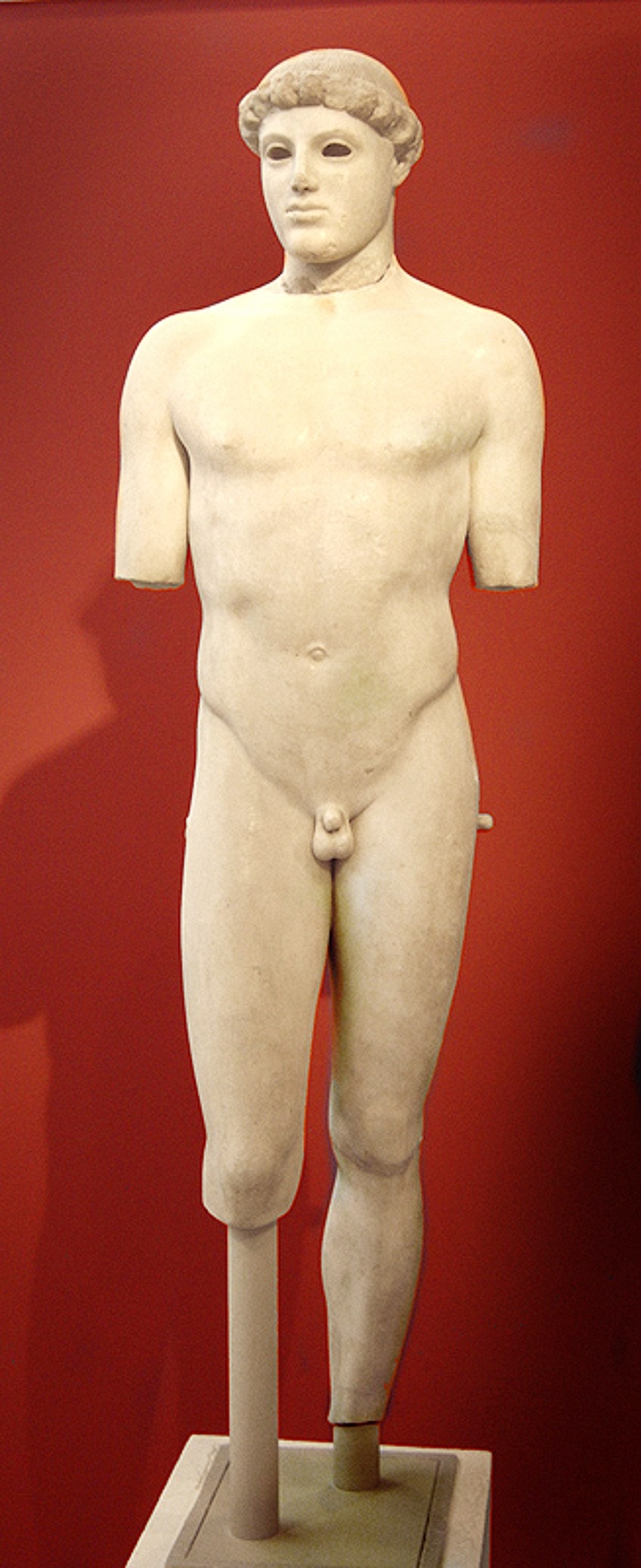
The pelvic area is no longer parallel with the rest of the sculpture in these pieces, as it was in previous Greek sculptures before Kritios Boy. Contrapposto is abundantly featured in the Roman replicas of Hermes and Heracles sculptures. Praxiteles’ statue of Hermes is a classic example. It can also be found in Roman versions of Amazon by Polyclitus.
Greek art stressed humanity as well as the beauty of the human intellect and body.
Greek adolescents trained and participated in naked athletic contests. The notion of a code of proportions, which uses mathematical characteristics to construct ratios, provided a significant contribution to the contrapposto Greek style.
Contrapposto and Renaissance Poses
Several artists recreated the classical posing style, dubbing it contrapposto, throughout the Renaissance in Italy as well as the Mannerist era, which they used to enliven paintings and sculptures with a fuller understanding of human anatomy. Numerous portrayals of David display the contrapposto style evolving as it became more detailed, overstated, and anatomically correct.
This ultimately resulted in Michelangelo’s legendary version of the sculpture, which combined a fluid serpentine-shaped physique with a potent sense of power and courage.
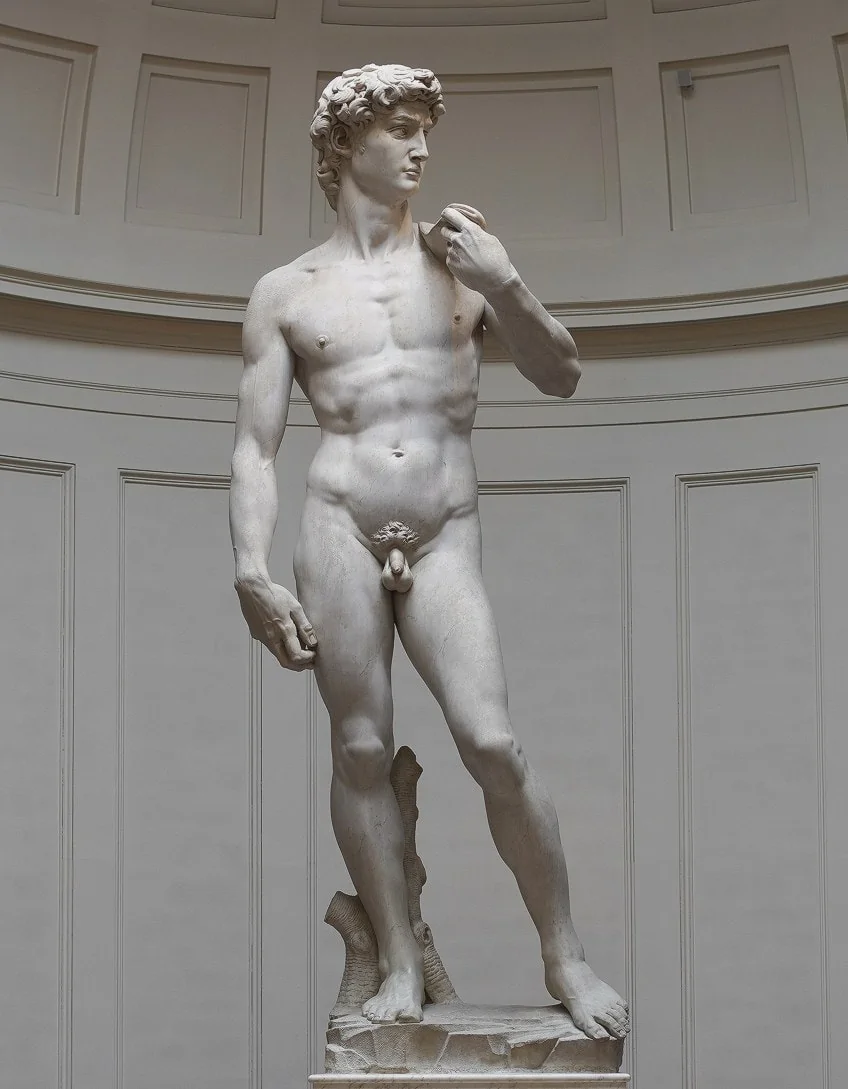
These postures were also spotted in Renaissance and Mannerism canvases, where figures were provided with dynamism and vitality through twisting forms that imply movement, as can be observed in Venus Rising from the Sea, 1520 by Titian wherein meticulously modeled forms start taking on a sculptural precision as if shifting through the space around them. In the 19th century, there was a rise in appreciation for the renowned Renaissance contrapposto figures, as can be seen in Antonio Canova’s The Three Graces (1817).
Canova’s three female contrapposto figures produce a rhythmic feeling of motion, almost as if they were dancing in unison, with their free-flowing dynamism reflected in the surrounding curtains.
The Modern Use of Contrapposto
The contrapposto posture remains a starting place for designers working in a variety of mediums in modern art, often with a conscious homage to the age-old legacy. Bruce Nauman’s Walk with Contrapposto (1968) is a performance art video piece in which he seeks to traverse a tight hallway while maintaining a twisted posture, producing a parody of the ostensibly calm attitude.
Many contemporary photographers, like Lindsay Key, have purposefully placed individuals in contrapposto as a lighthearted homage to Mannerism portrayals of the human form.
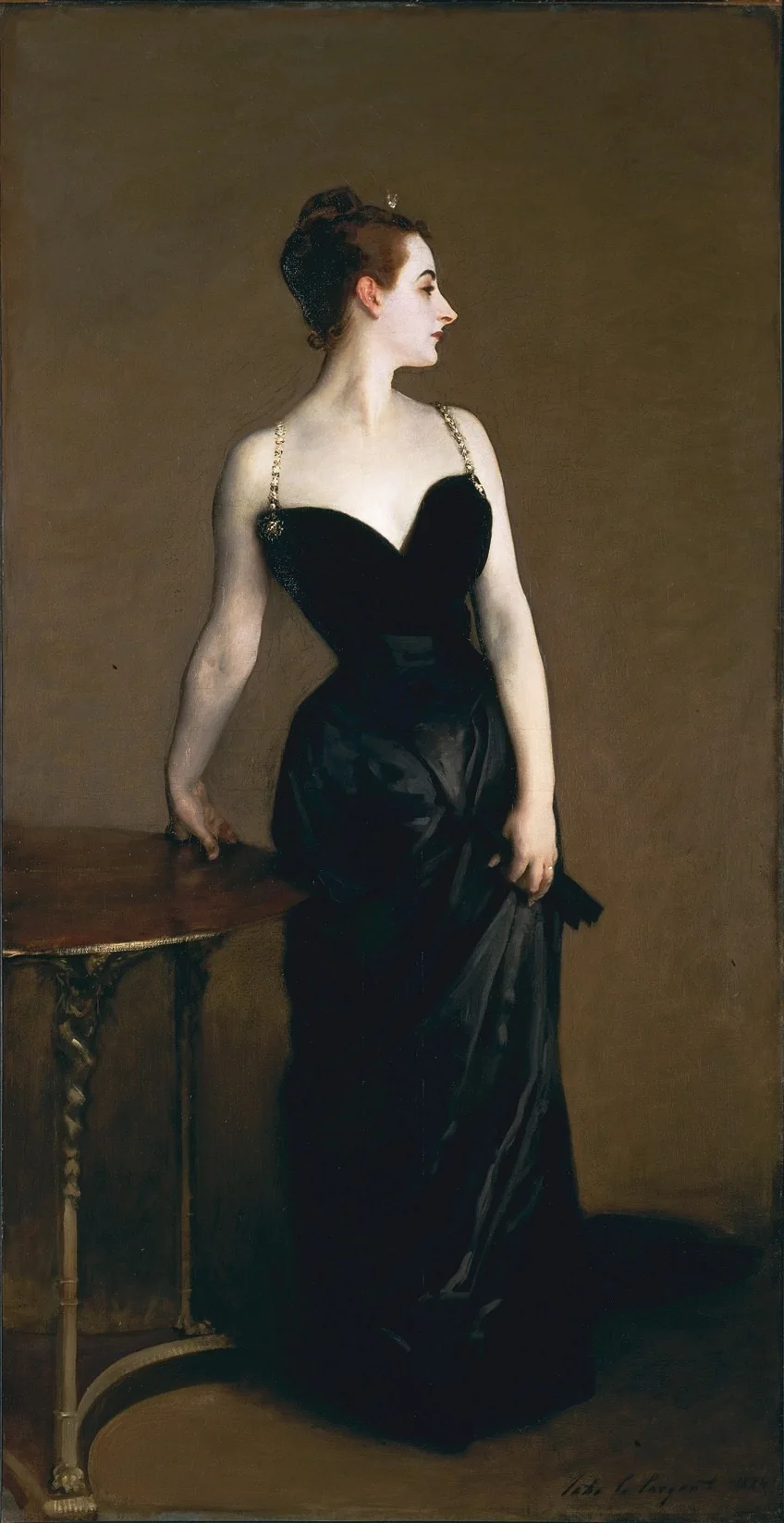
Madame X by John Singer Sargent is an excellent example of contrapposto in a late-19th-century painting. It may even be found in Picasso’s Les Demoiselles d’Avignon’s dynamic stances. Contrapposto is still used by artists today, however, some opt to abandon it to achieve a deliberately unsophisticated style.
The Use of the Contrapposto Pose
Contrapposto is most commonly associated with sculpture, notably classical posing in ancient sculptures. The concept, nevertheless, applies equally to just about any other depiction of the human body, such as painting and sketching.
Painting a convincing human body in a contrapposto stance, regardless of format, is far more difficult than a forward-facing figure. Viewpoint, foreshortening, and a grasp of anatomy are all required.
How to Recognize Contrapposto
Let us look at what sculpting is like without contrapposto to see why it is so important. For example, none of the three individuals in the ancient Egyptian sculpture Menkaure Accompanied by Two Goddesses (4th dynasty) pose with contrapposto.
While the monument remains impressive, observe how it appears rigid and less expressive than the other sculptures we have discussed. The figures are uniform, flat, and static.
They also have no feeling of motion. The Pharaoh Menkaure steps ahead with his left leg, although it appears to be uncomfortable. If you attempt his stance, you will discover that it is biologically impossible. You can’t take a stride forward with two absolutely straight legs and hips that are level. It just does not happen until your legs are at differing lengths. That’s presumably why he still appears to be standing rather than walking.
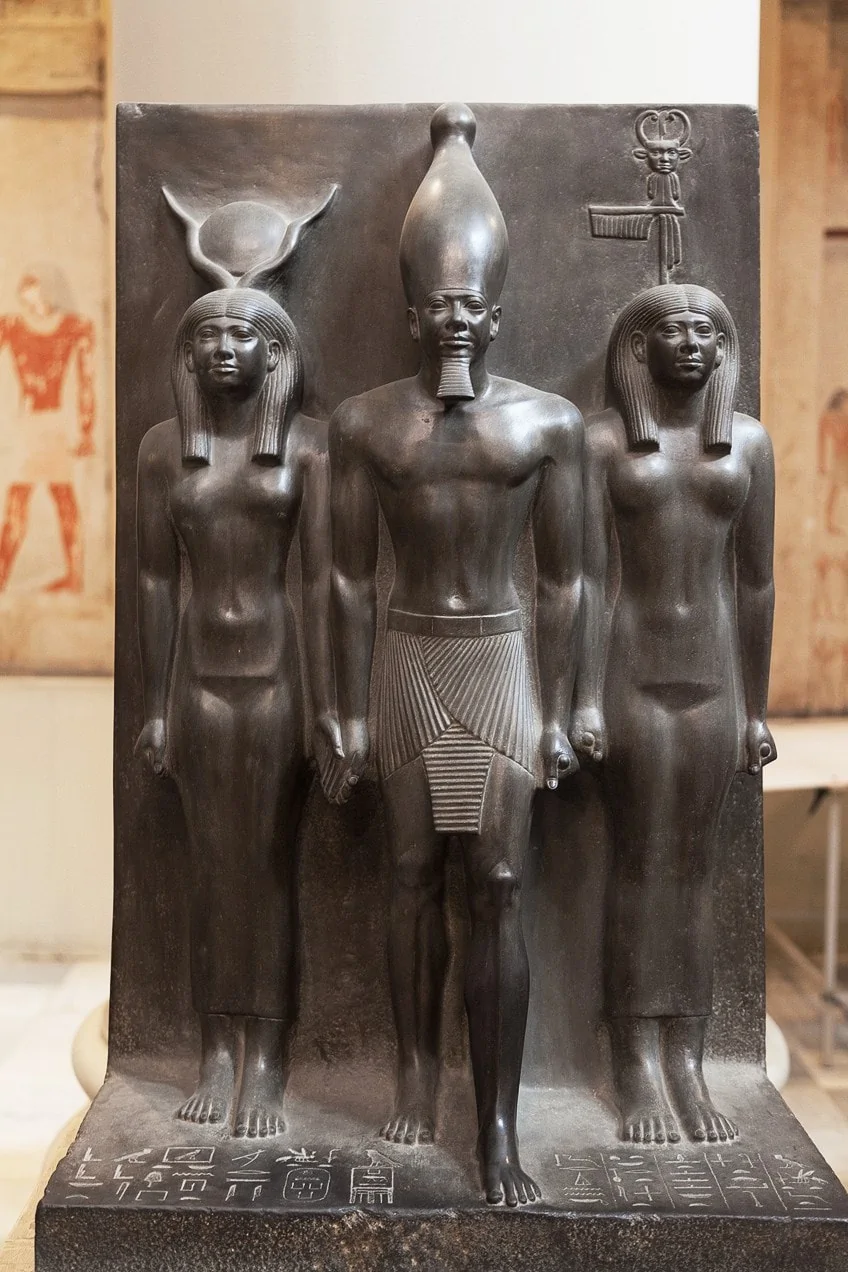
Contrapposto is often linked with naturalism, so it’s not strange to see it in eras of artwork that have prioritized naturalism. In comparison, early sculptures from the ancient Greek period do not show contrapposto. We have significant instances of contrapposto throughout classical Greek and Roman art.
It then declined over the medieval era, however, traces of it may be seen in the curvy shapes of certain High Gothic sculptures. This is known as Gothic sway.
The Science Behind the Contrapposto Pose
When it pertains to adopting a stance, it appears that contrapposto is the only way to go. Now, a study has revealed why the stance is so alluring. According to researchers, the stance, which entails resting with weight mostly on one leg and a little bend in the torso, causes the waist-to-hip ratios on one of the body’s sides to seem noticeably low. A small waist-to-hip ratio, indicating an hourglass figure, has historically been connected to female beauty as well as perceptions of conception and wellness.
Researchers believe that artists subconsciously realized that this position is more appealing and used it in their artistic endeavors.
While researchers have shown that a waist-to-hip ratio of 0.7 is considered most appealing in actual women, investigations have shown that the most famous fictional women had even lower ratios – specifically, a very tiny waist – a result that may help to clarify the attraction of fictional characters like Betty Boop.
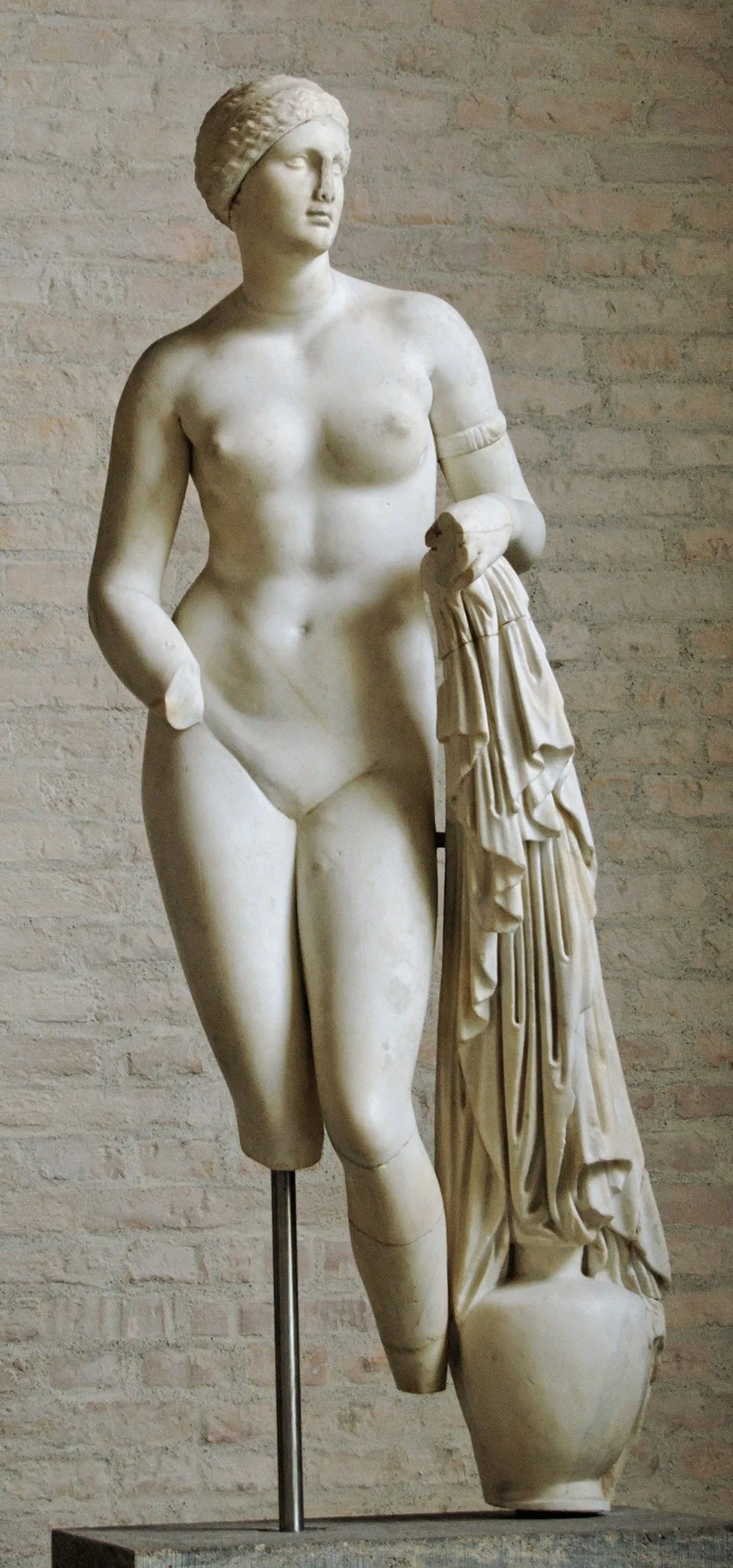
Experts have discovered that a woman’s position, as well as the direction from which she is observed, can affect her perceived waist-to-hip ratio, which could answer why the contrapposto pose is so appealing. Although males frequently utilize contrapposto, the studies did not investigate the influence on how their ratio was perceived or how others could react to it. The researchers made various 3D avatars of a lady positioned erect and in contrapposto, with the torso trimmed from the shoulder to the knees.
Each posture was depicted from eight distinct perspectives. Glancing across the torso, the waist-to-hip ratio for both stances was identical at all angles.
However, there was a variation when the right and left sides of the body were analyzed independently. The right and left waist-to-hip ratios were identical in all directions save but side-on in the upright stance, yet in the contrapposto position, the ratio seemed far less on one side of the figure than on the other side.
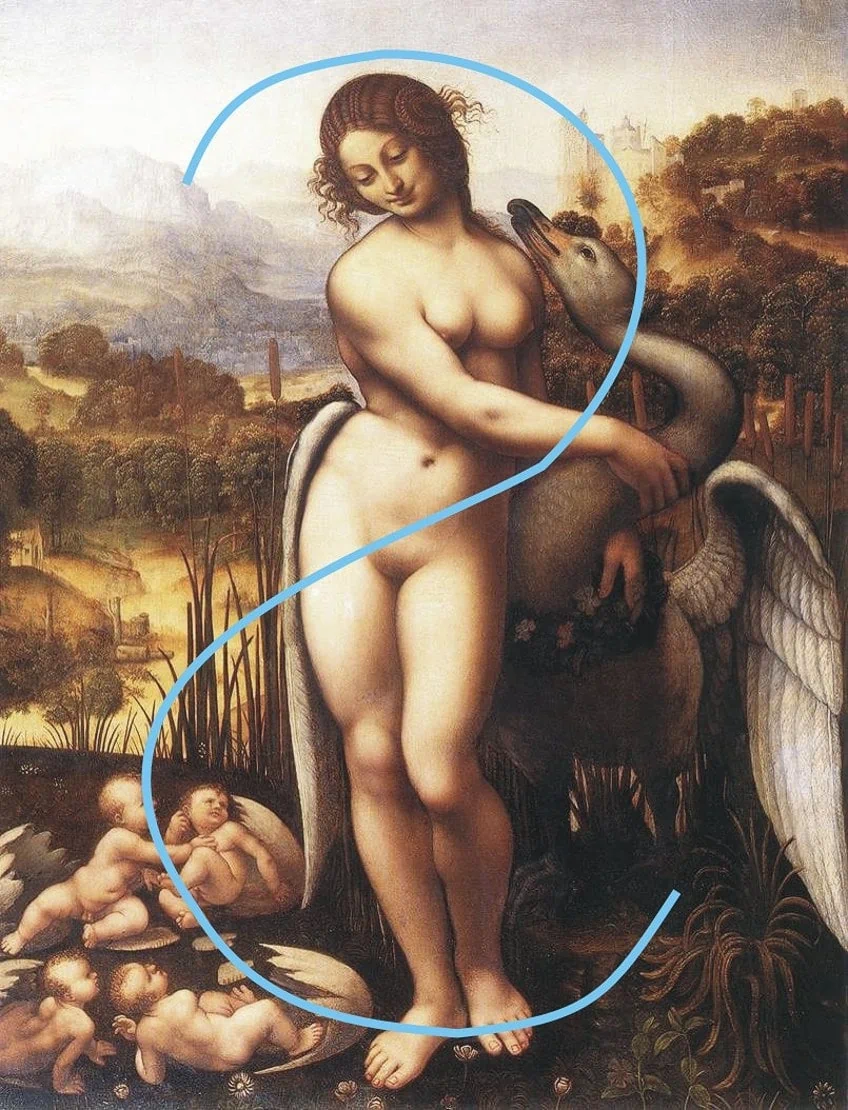
The photographs were shown to 70 university undergraduates, 30 men, and 40 women, and they were asked to judge how appealing they thought they were. In addition, the researchers monitored the individuals’ eye movements as they viewed the photos. Men ranked the photographs as more beautiful than women, although both sexes evaluated the contrapposto stance as more appealing than standing upright.
Further investigation revealed that some aspects of the female contrapposto stance were more appealing than the corresponding standing pose, even on the front view, and back view.
According to the eye-tracking results, both women and men spent around the same amount of time staring at the right and left sides of the image in practically all directions of the upright stance. For virtually all of the contrapposto positions, nevertheless, they spent much more time gazing at one side – the part with the smaller waist-to-hip ratio – as their eyes went to this corner first and more frequently.
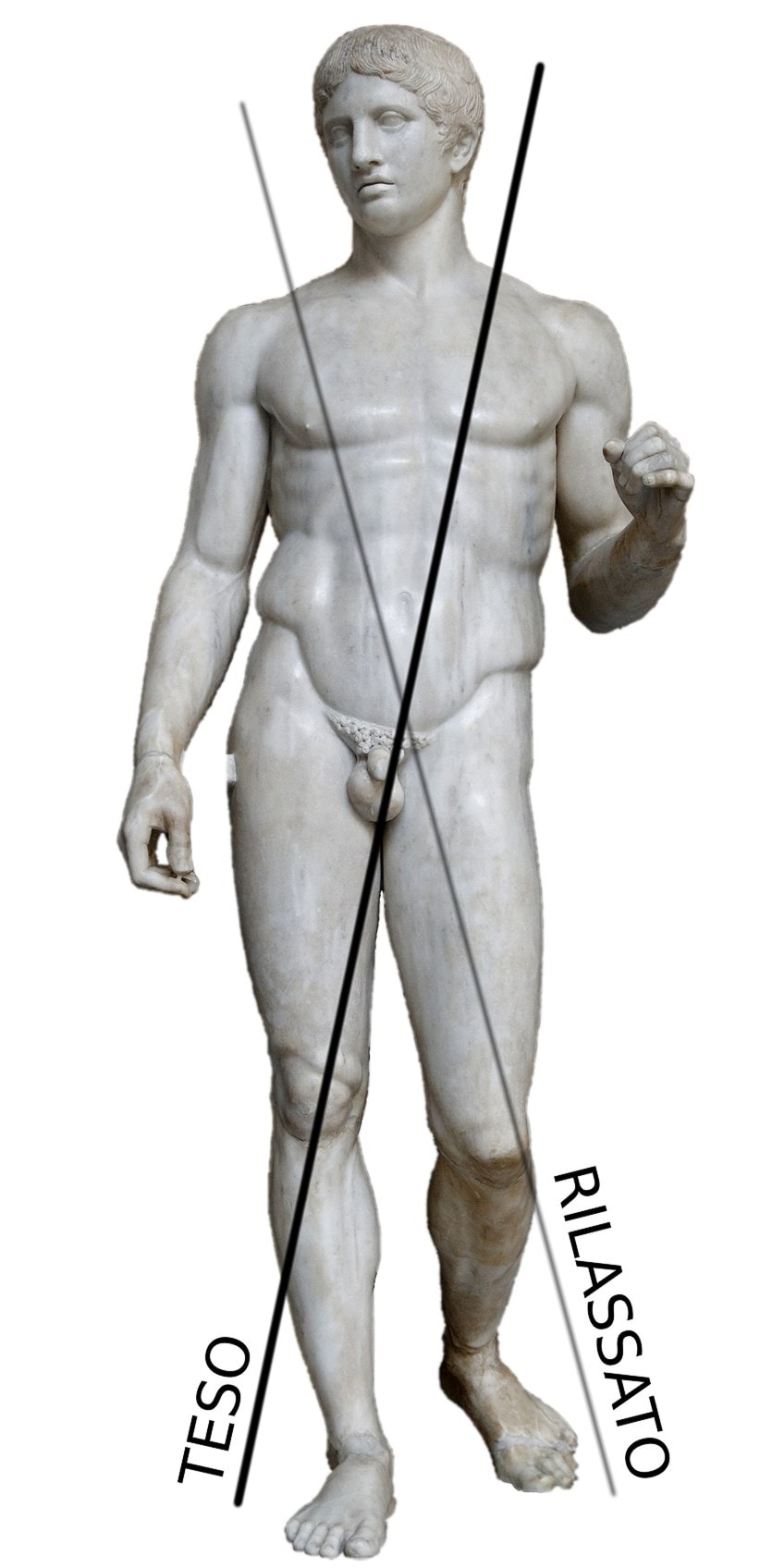
In other terms, they were drawn to edges that appeared curvier. The research had certain drawbacks, including the fact that it did not take into account variances in how the figure’s bosom looked in different photos. The researchers believe that the lower waist-to-hip ratio created on one angle when positioned in a contrapposto stance, in comparison to the higher proportions created on the other side, helps a lady stand out and look more appealing.
They further speculate that the findings might explain why particular female motions, gaits, and even dancing routines are perceived as more appealing.
For instance, when runway models walk or belly dancers move, they attempt to pose regularly in accentuated contrapposto figure shapes, which people find incredibly appealing. Likewise, high heels serve to emphasize the contrapposto shape when ladies walk.
The Use of Contrapposto in Painting
Contrapposto is most typically associated with sculpture, although it may also be used in other kinds of art such as painting, sketching, or engravings to make images look very natural and dynamic. Take, for example, Adam and Eve (1504) by Albrecht Dürer. The two humans are naked despite the coolness of the woodland. Their bodies are facing the front, and they are posed in a traditional contrapposto, with the mass moved to one foot. The accompanying tilt in shoulders and hips gives the impression of a body poised for action yet momentarily at rest.
Notwithstanding their apparent realism, they are looking at each other with their heads tilted to the side. This twisted head-and-body combination is clearly artificial.
The juxtaposition of the natural contrapposto and the falseness of the remainder of the stance generates a series of paradoxes that runs throughout the painting. Contrapposto could also be applied to denote a calm mental state. Cesare da Sesto’s painting Leda with the Swan (1505) depicts Leda’s figure in a calm contrapposto stance as she hugs the swan and smiles down happily at her offspring.
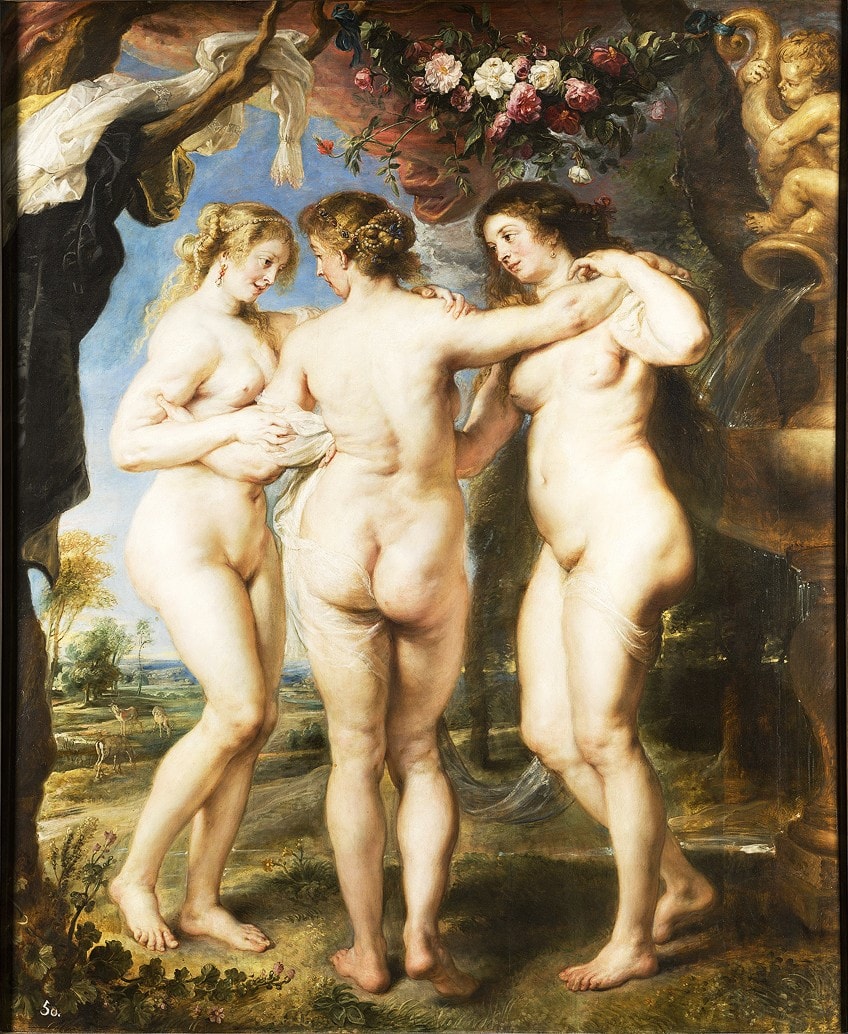
The subtle sfumato coloring in the backdrop adds to the serene atmosphere. The Three Graces (1630 – 1635) by Peter Paul Rubens is another great example of female contrapposto in painting. The image in the center depicts the spine’s remarkable bend as she leans largely on one leg.
One can observe how the skin tightens on one side while stretching on the other.
The figure’s hands clutch around his head in John Singer Sargent’s drawing Man Standing, Hands on Head (1910), producing strain in the upper torso that contrasts with the more relaxed stances seen in the other images. As he bends into the position and puts most of his weight on one knee, this tension appears to release below his upper body. The tilt in his hips and shoulders may be seen.
As we have learned today, the contrapposto pose can be utilized in many kinds of artworks to create a feeling of looseness and realness. For many centuries, sculptors did not employ the stance, and their works looked rigid, stiff, and unrealistic as a result. However, since the era of Classical posing in art, contrapposto Greek statues became the dominant pose, influencing artworks into the Renaissance era and even into modern-day art.
Take a look at our contrapposto webstory here!
Frequently Asked Questions
What Is Contrapposto?
Contrapposto, which first emerged in Ancient Greece, is considered a watershed moment in the history of both Ancient Greek and Western art because it symbolizes the first time that the human form is used to depict an underlying attitude. This gives the shape a more fluid, or loose, aspect. Sculptors polished and maintained the shape throughout the Imperial Roman and Hellenistic periods until it fell out of favor during the Medieval Era and was rediscovered during the Renaissance.
What Is the Contrapposto Definition?
The contrapposto posture is a vibrant stance used in art in which different sections of the body twist against one other. It is closely related to realism in art because it portrays an extremely natural posture observed in everyday life. As humans, we rarely stand entirely upright. We do not spread our weight uniformly on both feet and instead favor one foot. Our weight, therefore, changes to the side of our hip. As a consequence, the opposite hip has shifted inward. Our hips will move more when we change our weight.
Why Do We Find Contrapposto Pleasing?
The posture makes the waist-to-hip ratios on one side of the body appear strikingly low. A narrow waist-to-hip ratio, signifying an hourglass form, has historically been linked to feminine attractiveness as well as fertility and wellbeing. According to the researchers, artists intuitively recognized that this stance was more attractive and applied it in their artistic pursuits. While studies have shown that a waist-to-hip ratio of 0.7 is considered most attractive in real women, studies have also revealed that the most famous fictional women had even lower ratios – specifically, a very small waist – a finding that may help to explain the appeal of some fictional female characters.
Is Contrapposto Still Used Today?
The aesthetic is still popular today. The contrapposto stance continues to serve as a starting point for designers working in a range of mediums in modern art, often with a conscious nod to the age-old history. Many modern photographers, such as Lindsay Key, have purposely positioned people in contrapposto as a playful tribute to Mannerism depictions of the human figure.
Jordan Anthony is a Cape Town-based film photographer, curator, and arts writer. She holds a Bachelor of Art in Fine Arts from the University of the Witwatersrand, Johannesburg, where she explored themes like healing, identity, dreams, and intuitive creation in her Contemporary art practice. Jordan has collaborated with various local art institutions, including the KZNSA Gallery in Durban, the Turbine Art Fair, and the Wits Art Museum. Her photography focuses on abstract color manipulations, portraiture, candid shots, and urban landscapes. She’s intrigued by philosophy, memory, and esotericism, drawing inspiration from Surrealism, Fluxus, and ancient civilizations, as well as childhood influences and found objects. Jordan is working for artfilemagazine since 2022 and writes blog posts about art history and photography.
Learn more about Jordan Anthony and about us.
Cite this Article
Jordan, Anthony, “Contrapposto – One of the Most Famous Renaissance Poses.” artfilemagazine – Your Online Art Source. August 22, 2022. URL: https://artfilemagazine.com/contrapposto/
Anthony, J. (2022, 22 August). Contrapposto – One of the Most Famous Renaissance Poses. artfilemagazine – Your Online Art Source. https://artfilemagazine.com/contrapposto/
Anthony, Jordan. “Contrapposto – One of the Most Famous Renaissance Poses.” artfilemagazine – Your Online Art Source, August 22, 2022. https://artfilemagazine.com/contrapposto/.


